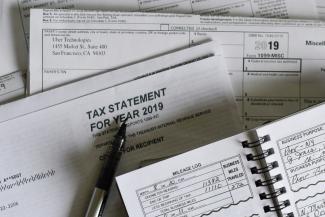
Effective Tax
What you think is your tax rate may not actually BE your tax rate. For instance, if you report just over $182,000 in adjusted gross income, the tax table says you’re in the 32% tax bracket. But you aren’t going to be paying anywhere near 32% of your reported income to Uncle Sam.
There is often a big difference between your effective tax rate and your marginal tax rate. The marginal rate is the amount of tax that applies to each your income above certain thresholds, while the effective tax rate is the share of your total annual income that you will need to pay in taxes.
To calculate the difference, imagine that you, a single filer, have earned exactly $182,101 in taxable income for tax year 2023, and you see from the tax tables that this would put you one dollar into the 32% rate. But if you took the $13,850 standard deduction, that brings the amount down to $168,251. The first $11,000 of that is taxed at a 0% rate; the next $33,725 is taxed at a 12% rate ($4,047 in taxes), the next $50,650 will be taxed at a 22% rate ($11,143 in taxes), and the remaining $73,276 is taxed at the 24% rate ($17,586.24 in taxes). Uncle Sam has received a check for $32,776.24, which is actually about 18% of the taxable income you earned. Not 32%.
The easy way to calculate your effective tax rate is to divide your tax bill by your total income. You might still grumble about your greedy Uncle Sam, but you might also feel better that your actual tax rate is lower than the published ones on the tax tables.
Sources:
https://www.aarp.org/money/taxes/info-2023/income-tax-brackets-2024.html
https://www.bankrate.com/taxes/marginal-vs-effective-tax-rate/#:~:text=Effective

